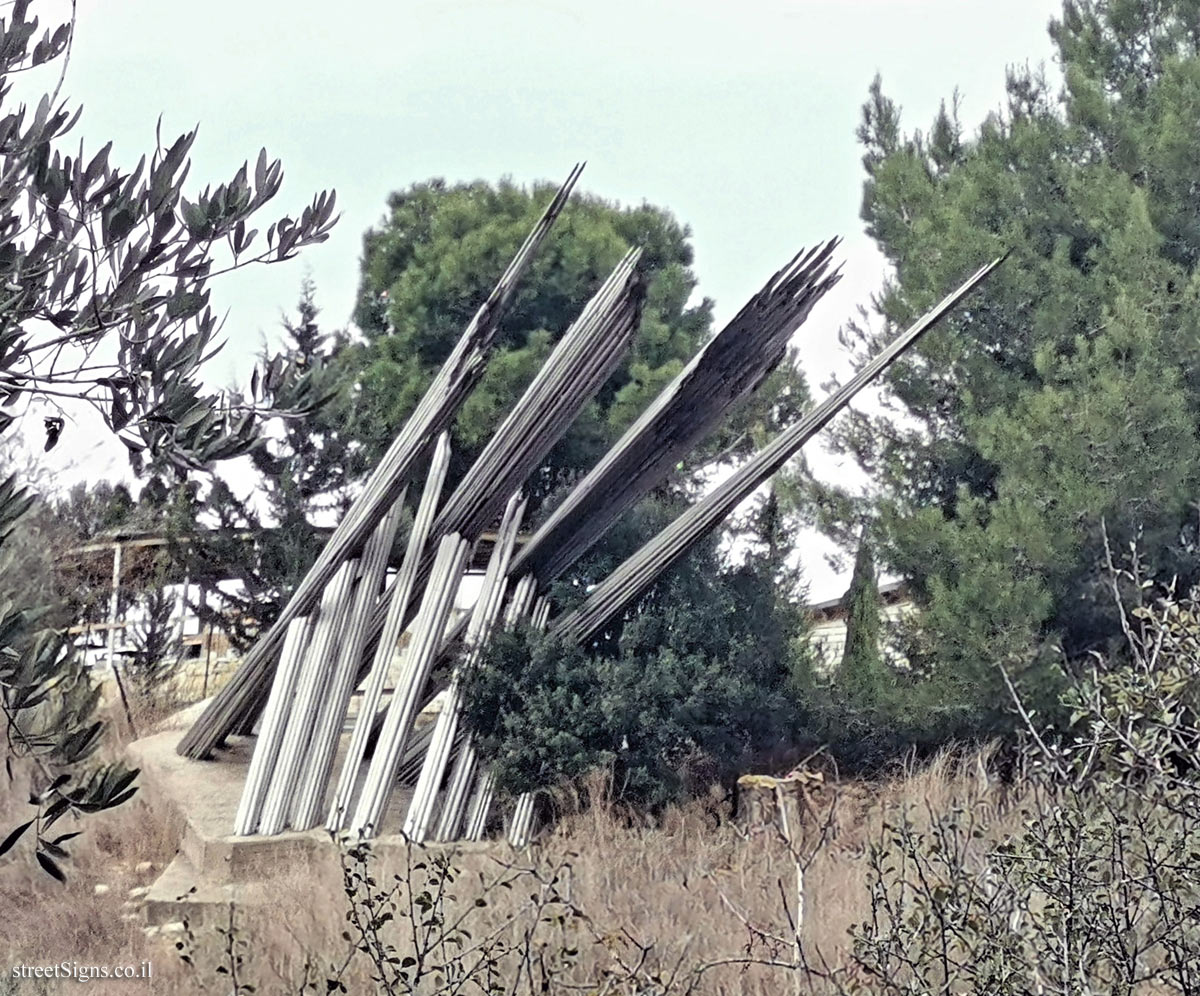The monument was photographed that day by the same photographer
 Click for a larger image
Click for a larger image The monument, created by the sculptors Naomi Henrik and Tuvia Katz, was inaugurated in 1967 in the presence of Prime Minister Levy Eshkol, and fighters from the Harel Brigade of the Palmach (including Yitzhak Rabin).
Translation of the text on the sign:
A monument in memory of those who opened the road to Jerusalem The battle on the road to Jerusalem during the War of Independence 1948
At the end of 1947, there were about 100,000 Jews in Jerusalem. Their existence depended on the connection with the coastal plain, in terms of the supply of water, food, medical supplies and weapons. When the War of Independence began, the Arabs wanted to occupy the city. They concentrated a great deal of force not only in attacking the city, but also in order to cut off the only transportation artery to it, by operating checkpoints and ambushes along it.
Until mid-May 1948, the British ruled the country and prevented the Hebrew Defense Forces from seizing weapons when they were required to act against the Arabs.
Thus, transportation to Jerusalem was guaranteed by the management of the convoys and vehicles in which they were promised by close escorts with hidden weapons.
As the effectiveness of the Arabs’ attacks increased, the methods of defense developed, respectively: the vehicles were armored, and the convoys bypassed the places prone to the attacks as far as possible. Despite this the convoys were attacked and many of the fighters were injured and armored vehicles went out of use. The close escort method failed and Jerusalem was left with equipment and supplies for a short period.
The necessity to strengthen the city led to the decision to concentrate forces, relatively large, in order to use them to occupy villages and positions that dominate the road and hold them, in order to allow the transfer of supply convoys.
Ministry of Defence
Rehabilitation Division
The unit for commemorating the soldier
Learn about:

 Click for a larger image
Click for a larger image